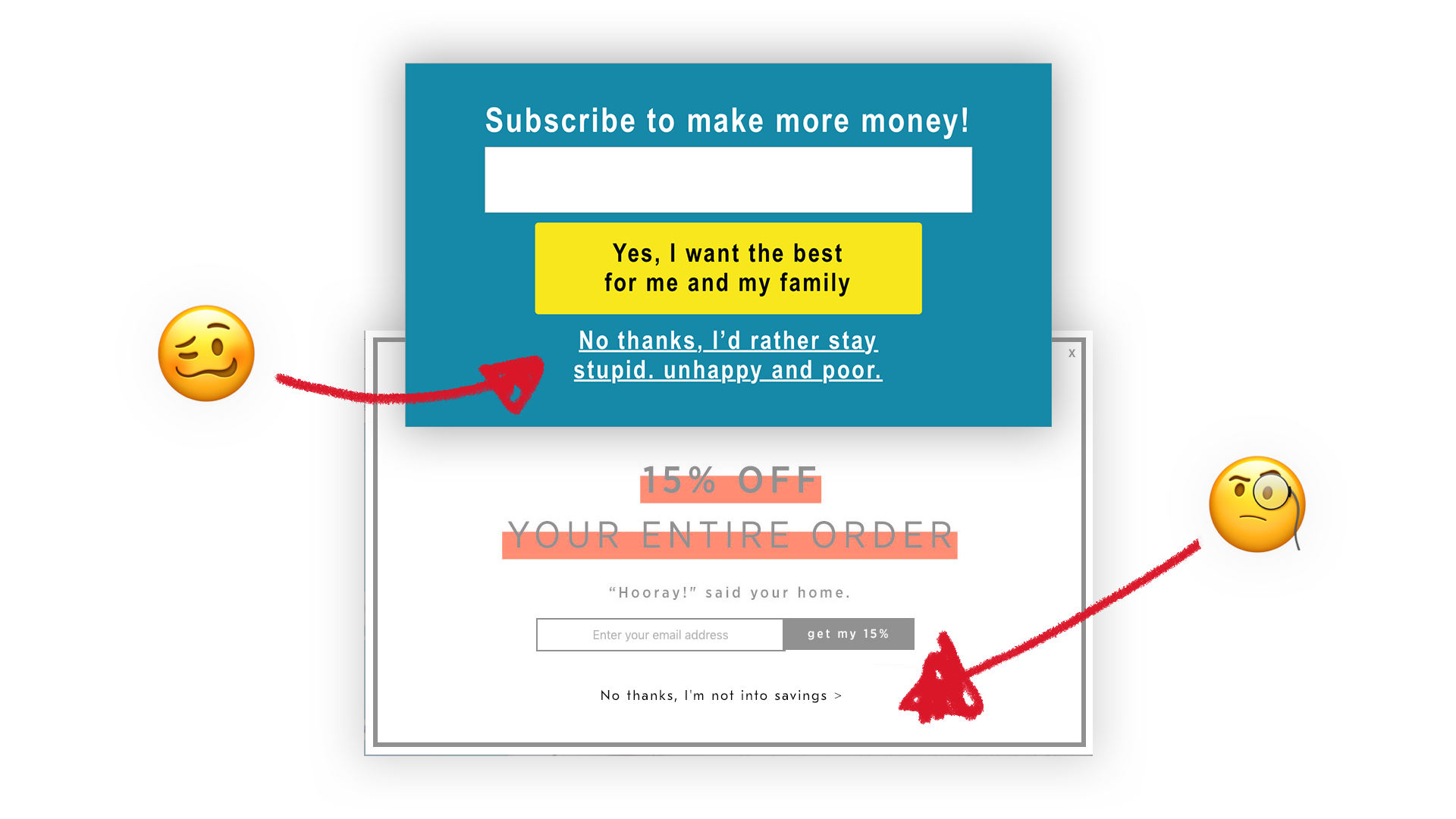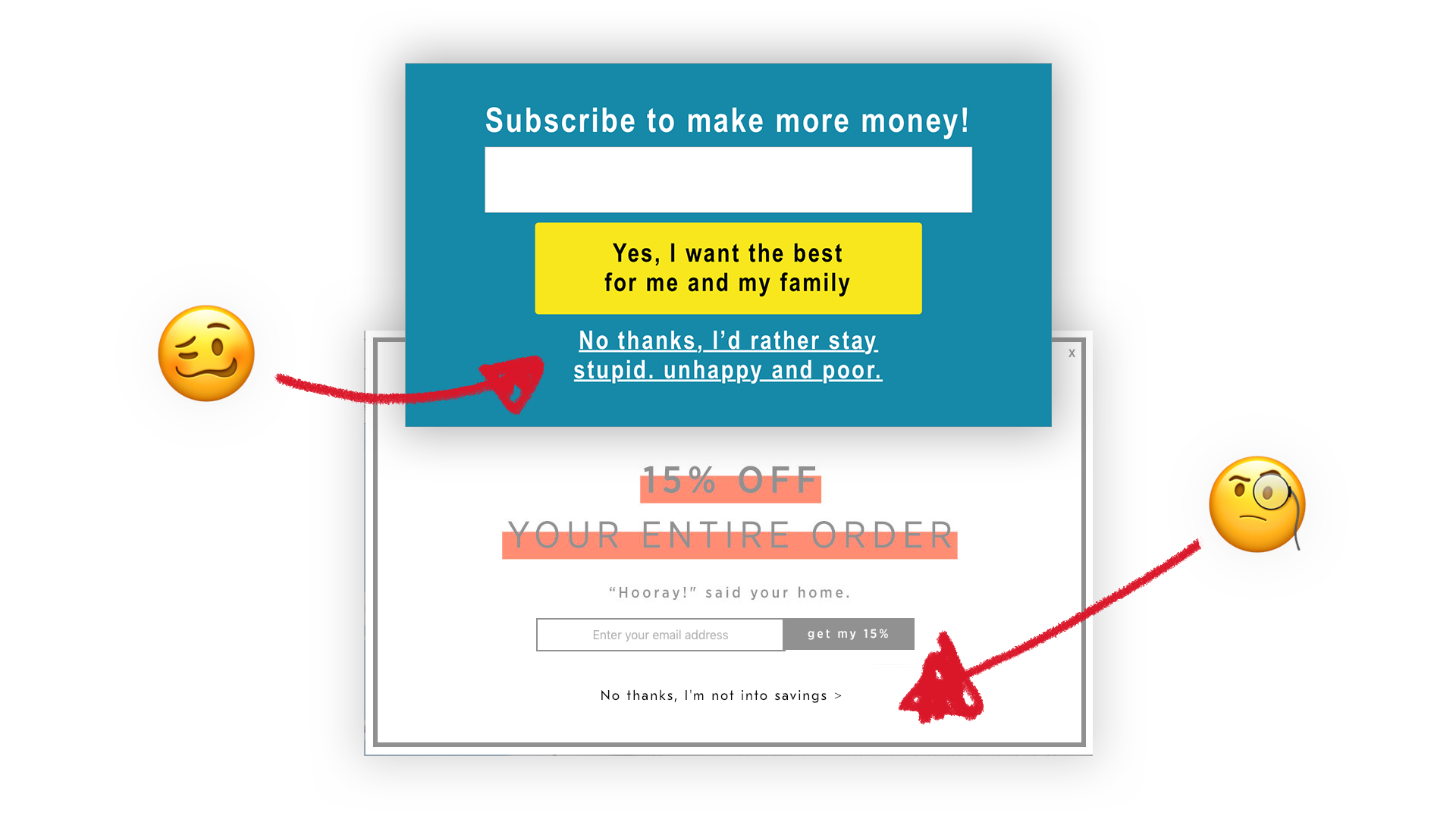5 August 2020 (updated: 3 February 2021)
Low Sales? 6 Reasons Your Website Is Not Converting
Chapters

Is your website optimized to generate you the sales you need? Learn about the most common usability problems that hinder your website's performance.
Website optimization is indeed a broad term, involving many elements, form marketing through content up to SEO. But, let’s face it: it all begins with UX, so your users’ experience.
If your users are dropping after performing specific actions, or not completing the actions you intended them to, it’s high time you gave your UX game a closer look.
Website's not converting sales - most common problems
Here’s a shortlist of the most common usability problems your users might have with your website.
 Feeling forced, anyone?
Feeling forced, anyone?
1. You are making users think about what they have to do next
If your users need to search around the website to find content that is vital for your business (like your product or service line description) or content that should be easy to find for any business out there (contact information, pricing policy etc.) it means your website suffers from low discoverability. Discoverability can be defined as the user’s easiness to find a particular subpage or product’s feature.
But it doesn’t end there: your users need to know how the elements on your website operate, and how they’re ought to use them. Or, to make it even more straightforward, they need to know the answer to the question: what will I find when I push this button?
You need to take discoverability into account on all levels: from building your information architecture to designing and naming buttons.
When I look at something, I should be able to discover what operations I can do [...] When [discoverability] is not there, well, you don't know how to use something.”
Don Norman, Director of The Design Lab at the University of California
2. Complicated or hidden navigation
Navigation is the core element of your website; it’s supposed to be like a map, guiding users to the right place. From SEO, through usability up to traffic and conversions, it affects all critical areas of your website. And yet, it’s easy to get it all wrong.
First of all: your navigation needs to be device-conscious. Your users browse your website differently if they are on their smartphones, and differently when they’re browsing on desktop.
Some of the biggest usability faux pas involve drop-down menus. They are not only not as SEO friendly as one can suspect (depending on the code, they might be hard to crawl by search engines), but they have also proven to be unintuitive in many user tests (including this one by Nielsen Norman Group).
And, if they are too long, they can make users feel overwhelmed: the key is to be able to guide your user through the website, as seamlessly and painlessly as possible.
There’s only one case where drop-down menus work, and it's only the case of very complex websites where a regular menu would limit users’ options significantly.
3. Bad mobile experience
We’ve tackled the navigation, but it’s important to note the full distinction between the mobile and the desktop experience. Your users approach websites differently when they’re on mobile, and differently when they’re using their computer. Be mindful of these two different approaches.
Many elements can be squeezed on a desktop screen, but it’s a tough job to make all elements visible on mobile.
The good idea is to prioritize features and content you want your users to engage with the most, don’t push everything to appear on the tiny screen. Ask yourself: what brings the most value to your users on this particular page?
4. Website overall performance
Your website’s performance is the crucial usability factor. According to Akamai, 40% of visitors will abandon a site, if it takes more than 3 seconds to load.
If your website’s loading time is an issue, start by optimizing and cleaning up your code. Every available website speed tracker will list the issues you’re having with your website: too many HTTP requests or redirecting, JavaScript issues, caching etc. After that, if you see no results, a helping hand from an experienced SEO agency would be in order.
5. Dark UX patterns
Dark UX patterns do not only involve messing up your button game like one of these malicious websites every one of us encountered that tell you to click “X” to close, and then open another ten awesome websites. It’s everything that aims at making the user confused or exploited to perform a specific action.
Expanding their shopping basket with a suggested purchase without warning, forced continuity of a free trial and requesting user’s credit card information upon sign-up (and charging you after the trial has ended). Even the pop-ups and subscription boxes promising the world of insights and knowledge, that were popular not so long ago, fall into this category. As in fact, they are nothing more than an act of user shaming. This reputation even got them a name: confirmshaming.
 Two examples of confirmshaming. Dark UX Patterns can hinder your website's performance and users' trust.
Two examples of confirmshaming. Dark UX Patterns can hinder your website's performance and users' trust.
Never trick your users into traps to fulfil your short-term goals. It may work for a while, but you know the saying: it takes a lifetime to build trust, and it takes a second to lose it.
6. Website optimization doesn’t bring any results
If you have found yourself in a circle of improvements that don't bring results, you might want to consider hiring a third-party consultancy or an external UX Designer. They can provide you with an unbiased high-level view on your website's usability and performance based on the analytics and evaluation of the contents.
A UX Audit will give you a set of guidelines, grouped by importance and urgency of implementation, so you'll know precisely what to do next and how to do it.





